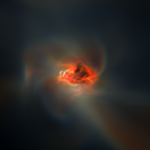- (abs, pdf) Hopkins, Why Do Stars Form In Clusters? An Analytic Model for Stellar Correlation Functions
- (abs, pdf) Christian et al., Citizen Science: Contributions to Astronomy Research
- (abs, pdf) Baek et al., Joint Ly{\alpha} emitters - quasars reionization constraints
- (abs, pdf) François et al., Detailed abundances in stars belonging to … Continue Reading ››
Yearly Archives: 2012
10 Feb 2012
“The Birth of a Galaxy” Published

06 Feb 2012
02 Feb 2012
01 Feb 2012
31 Jan 2012
- (abs, pdf) Karlsson et al., The Chemical Signature of a Relic Star Cluster in the Sextans Dwarf Spheroidal Galaxy - Implications for Near-Field Cosmology
- (abs, pdf) Mackey, Radiation-MHD simulations of pillars and globules in HII regions
- (abs, pdf) Smith et al., Line Profiles of Cores within Clusters: I. The Anatomy of … Continue Reading ››
30 Jan 2012
- (abs, pdf) Vanzella et al., On The Detection Of Ionizing Radiation Arising From Star-Forming Galaxies At Redshift z ~ 3-4 : Looking For Analogs Of
- (abs, pdf) Mackey, Accuracy and Efficiency of Raytracing Photoionisation Algorithms
- (abs, pdf) Lokas et al., How to make an ultra-faint dwarf spheroidal galaxy: tidal stirring … Continue Reading ››